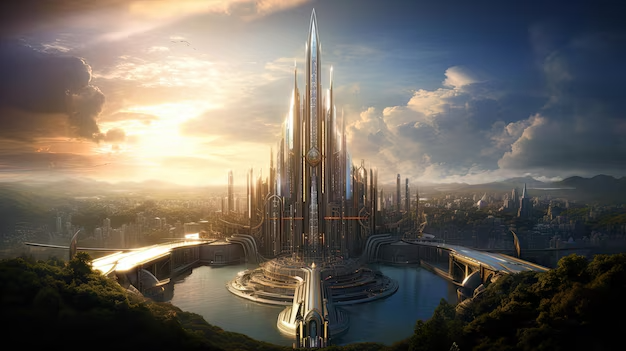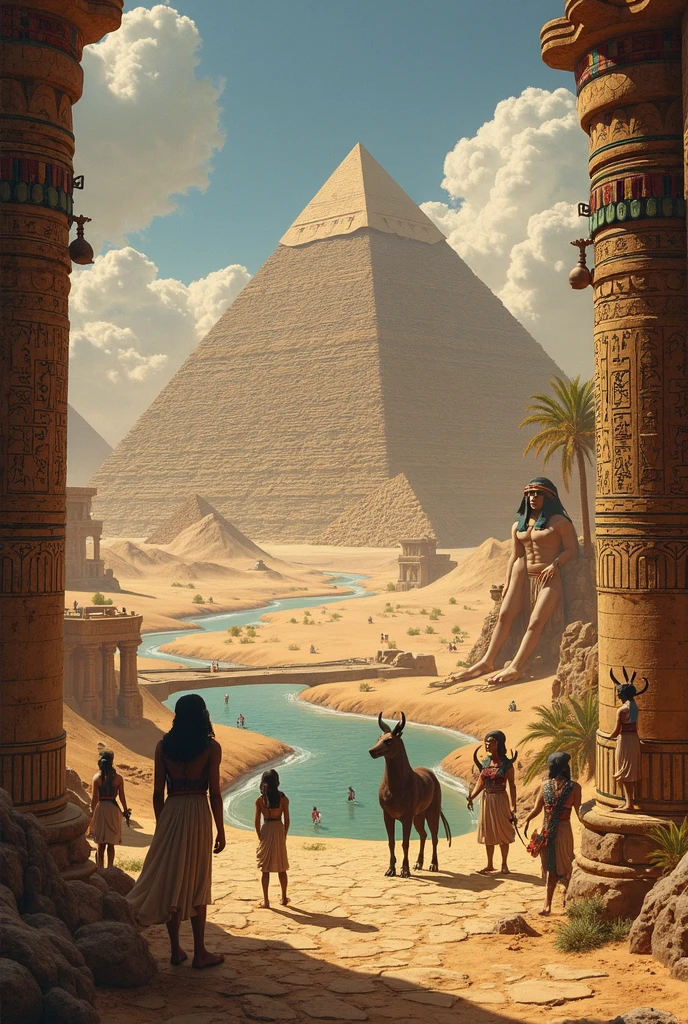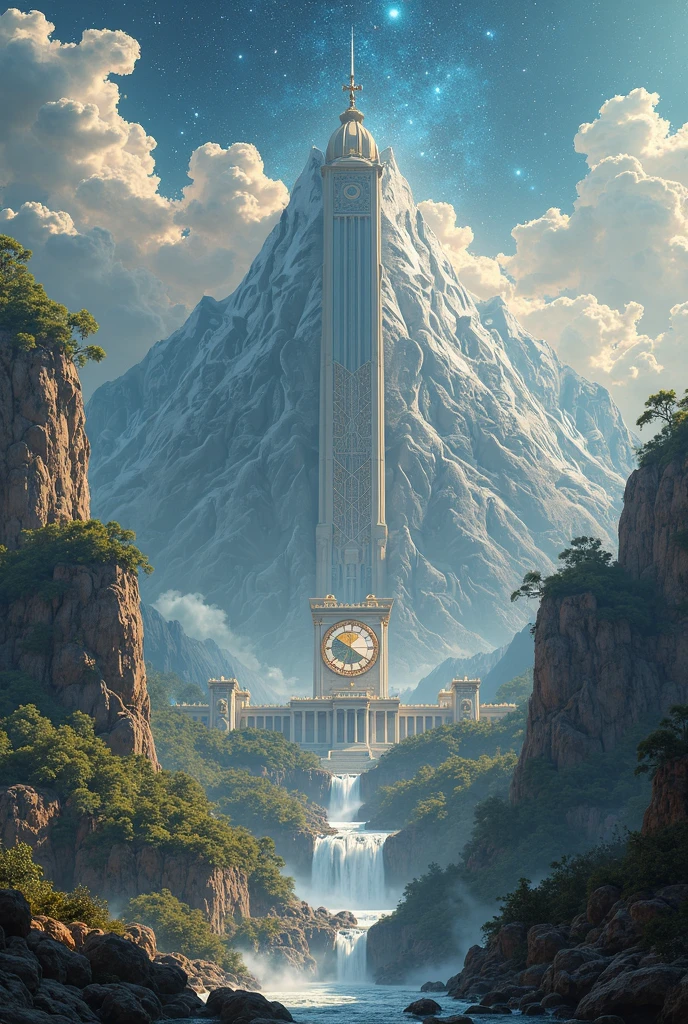Scandinavian Mythology: The Cosmic Tree Yggdrasil and the Nine Worlds
At the heart of Scandinavian mythology lies Yggdrasil, the immense ash tree that connects all realms of existence. This sacred tree is not just a symbol but the very framework of the Norse cosmos, linking gods, humans, and supernatural beings across the Nine Worlds. In this deep dive, we explore its roots, branches, and the mysterious forces—like the Norns—that shape destiny within this intricate cosmology.
The Structure of Yggdrasil: Roots and Branches
Yggdrasil, often called the “World Tree,” is described as an evergreen ash tree whose branches stretch into the heavens and roots delve into three pivotal wells across the Norse universe. Here’s how its structure defines the Norse cosmos:
- Three Roots: Each root extends to a well—Urdarbrunnr (Fate), Mímisbrunnr (Wisdom), and Hvergelmir (Roaring Kettle).
- Branches: They shelter the Nine Worlds, including Asgard (home of the gods) and Midgard (human realm).
- Creatures: An eagle perches atop, while the serpent Nidhogg gnaws at its roots, symbolizing chaos and renewal.
The Wells Beneath Yggdrasil
| Well | Location | Significance |
|---|---|---|
| Urdarbrunnr | Asgard | Guarded by the Norns, it governs fate. |
| Mímisbrunnr | Jotunheim | Source of Odin’s wisdom; Mimir’s head resides here. |
| Hvergelmir | Niflheim | Origin of primordial rivers and dragons. |
The Norns: Weavers of Destiny
Beneath Yggdrasil, the three Norns—Urd (Past), Verdandi (Present), and Skuld (Future)—carve runes into the tree’s trunk, shaping the fate of all beings. Unlike the Greek Fates, they embody a dynamic interplay of time and choice.
Roles of the Norns
- Urd: Governs what has been, drawing from the Well of Fate.
- Verdandi: Represents the unfolding present, adapting destiny.
- Skuld: Hints at inevitable yet mutable futures.
The Nine Worlds of Norse Cosmology
Held within Yggdrasil’s embrace, the Nine Worlds are realms of gods, giants, elves, and humans. Below is a brief overview:
| World | Inhabitants | Description |
|---|---|---|
| Asgard | Aesir Gods | Realm of Odin and Thor, connected by Bifrost. |
| Midgard | Humans | Protected by Thor; encircled by Jormungandr. |
| Jotunheim | Giants | Land of chaos and primal forces. |
| Niflheim | Ice & Shadows | Origin of Ymir; misty and frozen. |
For further reading on the Nine Worlds, explore this detailed guide.
Yggdrasil’s Symbolism in Modern Culture
The imagery of Yggdrasil persists in games like God of War and literature, symbolizing interconnectedness. Its cosmology inspires ecological metaphors, portraying life’s fragility and resilience.
Key Themes Linked to Yggdrasil
- Cycle of Life: Decay (Nidhogg) and growth (Heidrun).
- Interdependence: Gods rely on the tree’s vitality.
- Chaos & Order: Balance between worlds.
Learn more about Norse symbols here.
Myths Featuring Yggdrasil
In the Poetic Edda, Odin hangs from Yggdrasil for nine nights to gain runic wisdom—a pivotal tale of sacrifice. Another myth describes Ragnarök, when the tree trembles but survives, signaling rebirth.
For primary sources, visit the Sacred Texts archive.
Discover more fascinating myths and follow our latest updates on Facebook.
Beyond its roots and branches, Yggdrasil is home to a host of mythical creatures that play crucial roles in Norse cosmology. These beings embody the delicate balance between creation and destruction, order and chaos.
The Eagle and the Hawk
Perched atop the highest branches of Yggdrasil, an unnamed eagle surveys the cosmos. Between its eyes sits Vedrfolnir, a hawk whose sharp vision symbolizes divine foresight. Their presence connects the heavens to the tree’s lower realms.
Significance of the Eagle
- Cosmic Observer: Represents wisdom and oversight of the Nine Worlds.
- Messenger: Exchanges hostile words with Nidhogg, reflecting the tension between sky and underworld.
Nidhogg: The Serpent of Chaos
Gnawing at Yggdrasil’s roots in Niflheim, the dragon Nidhogg embodies decay. Yet, its role isn’t purely destructive—it’s a necessary force in the cycle of renewal, especially during Ragnarök.
| Creature | Location | Role |
|---|---|---|
| Nidhogg | Roots (Niflheim) | Gnaws at Yggdrasil, corrupting the dead. |
| Ratatoskr | Trunk | Squirrel messenger between eagle and Nidhogg. |
| Heidrun | Branches (Asgard) | Goat whose milk nourishes the Einherjar. |
Ratatoskr: The Mischievous Messenger
The squirrel Ratatoskr scurries along Yggdrasil’s trunk, ferrying insults between the eagle and Nidhogg. This creature symbolizes discord but also the interconnectedness of opposing forces.
While Asgard and Midgard are central to Norse myths, other realms within Yggdrasil’s branches hold unique significance.
Alfheim: Realm of the Light Elves
Ruled by the god Freyr, Alfheim is a luminous world of beauty and magic. The Light Elves, associated with nature and fertility, are considered benevolent spirits.
Svartalfheim: Home of the Dwarves
Beneath the earth lies Svartalfheim, where master craftsmen like the dwarves forge legendary artifacts, including Thor’s hammer, Mjolnir, and Odin’s spear, Gungnir.
Notable Dwarven Creations
- Draupnir: A gold ring that multiplies itself.
- Skidbladnir: A ship that folds to pocket size.
- Tyrfing: A cursed sword that never misses.
The apocalyptic event Ragnarök tests Yggdrasil’s resilience. As the worlds collapse into chaos, the tree shudders but endures, symbolizing rebirth.
Events Leading to Ragnarök
- The death of Balder, the beloved god, signals the beginning of the end.
- Fimbulwinter: A three-year winter shrouds the worlds in ice.
- The monstrous wolf Fenrir breaks free, devouring Odin.
Yggdrasil’s Fate During Ragnarök
Though the tree trembles as giants and gods clash, it survives the destruction. Its roots hold firm, allowing new life to emerge from the ashes—a testament to the cyclical nature of Norse cosmology.
For the Vikings, Yggdrasil wasn’t just a mythic symbol—it shaped their worldview, rituals, and even governance.
The Thingstead: A Human Reflection of Yggdrasil
Viking assemblies, called Things, were often held beneath large trees, mirroring Yggdrasil’s role as a cosmic meeting place. These gatherings reinforced law and unity among tribes.
Shamanic Practices and the World Tree
Norse shamans, or Seiðr practitioners, believed they could traverse Yggdrasil’s branches in trances to commune with spirits or foresee events—a parallel to Odin’s self-sacrifice for wisdom.
Artifacts like the Överhogdal tapestries and runestones depict Yggdrasil, proving its cultural importance beyond oral traditions.
Notable Depictions
- The Gosforth Cross: A 10th-century monument blending Christian and Norse imagery, featuring Yggdrasil-like motifs.
- Viking Jewelry: Pendants shaped like trees or serpents nod to Yggdrasil’s mythology.
Modern ecology draws surprising parallels to Yggdrasil, framing it as an ancient metaphor for Earth’s interconnected systems.
Yggdrasil as a Symbol of Ecosystems
Like the tree’s roots and branches, modern science highlights how forests communicate via fungal networks—echoing the Norse understanding of hidden connections.
Comparisons Between Myth and Science
| Mythic Concept | Scientific Parallel |
|---|---|
| Yggdrasil’s roots | Mycorrhizal networks |
| Nidhogg’s decay | Decomposition in nutrient cycles |
| The Nine Worlds | Biodiversity in biomes |
Modern Heathenry and Ásatrú movements revere Yggdrasil as a sacred symbol, integrating its imagery into rituals and meditative practices.
Rituals Honoring the World Tree
- Blót Ceremonies: Offerings are made at the base of trees to honor the gods and spirits.
- Seasonal Festivals: Celebrations like Yule incorporate Yggdrasil’s themes of renewal.
For deeper insights into Norse paganism, visit Heathen Hof.
Despite its prominence, aspects of Yggdrasil remain enigmatic, inviting scholarly debate.
The Missing Worlds
While texts mention Nine Worlds, only eight are consistently named. Some speculate the ninth is Muspelheim, the fire realm, or a hidden afterlife like Helgafjell.
Yggdrasil’s Origins
No myth explains how Yggdrasil came to be—was it born from Ymir’s body, or did it predate the cosmos? This ambiguity fuels interpretations of the tree as a primal, eternal force.
Explore scholarly theories at JSTOR.
Discover more fascinating myths and follow our latest updates on Facebook.
While much attention is given to Asgard and Midgard, several other worlds in Yggdrasil’s branches hold equally fascinating roles in Norse cosmology. These realms often appear in obscure myths but reveal deeper layers of the Viking worldview.
Vanaheim: Land of the Vanir Gods
Home to the Vanir deities like Freyja and Njord, Vanaheim represents fertility, nature magic, and prosperity. After the Aesir-Vanir war, this realm became crucial for maintaining cosmic balance.
Key Features of Vanaheim
- Seidr Magic: The Vanir introduced this shamanic practice to the Aesir.
- Golden Fields: Described as eternally fertile, symbolizing abundance.
- Cultural Exchange: Hostages from both god tribes lived here post-war.
Helheim: The Controversial Underworld
Ruled by Hel, Loki’s daughter, this realm receives those who die of illness or old age. Unlike the Christian Hell, it’s a neutral space—neither punitive nor paradisiacal.
| Helheim Feature | Description |
|---|---|
| Eljudnir | Hel’s hall, where she feasts with the dead |
| Gjallarbrú | The echoing bridge guarded by Modgud |
| Náströnd | Corpse-shore for oath-breakers (rarely mentioned) |
Norse deities maintained complex ties with the World Tree, relying on it for survival while actively shaping its fate.
Odin’s Sacrifice Revisited
The famous hanging of Odin on Yggdrasil involved more than acquiring runes—it established the tree as a conduit for divine knowledge transfer.
Three Layers of Odin’s Ordeal
- Physical: Pierced by his own spear Gungnir
- Magical: Receiving nine powerful songs from Bolthorn
- Cosmic: Binding his fate to the tree’s wellbeing
Thor’s Protective Role
While Odin sought wisdom, Thor actively defended Yggdrasil’s integrity. His battles against giants prevented them from destabilizing the tree’s foundations.
- Jormungandr: The Midgard serpent’s growth threatened Yggdrasil’s roots
- Hrungnir: The clay giant nearly toppled the tree during an attack
The tree’s role in Norse cosmogony extends beyond structure—it participated in the universe’s formation.
The Primordial Cow Audhumla
Before Yggdrasil’s full growth, the cosmic cow Audhumla licked salt from icy stones near Hvergelmir, inadvertently creating the first god, Buri.
| Entity | Connection to Yggdrasil |
|---|---|
| Audhumla | Sustained Ymir near Yggdrasil’s future roots |
| Buri | Grandfather of Odin, born from tree-adjacent ice |
| Ymir | His body became soil nourishing Yggdrasil |
The First War and Its Impact
The Aesir-Vanir conflict left scars on Yggdrasil, with some myths suggesting the tree absorbed magical residue that later attracted creatures like Ratatoskr.
Recent scholarship suggests the Vikings may have viewed the World Tree as undergoing seasonal changes mirroring Midgard’s.
Winter’s Grip on the World Tree
During Fimbulwinter, Yggdrasil was believed to:
- Grow brittle branches that scraped the sky
- Have roots frozen solid in Niflheim
- Silence Ratatoskr temporarily
Spring Renewal Rituals
Evidence from sagas indicates Vikings performed “tree-awakening” ceremonies involving:
- Pouring mead on oak roots
- Carving runes of growth into bark
- Hanging small shields as offerings
Recent discoveries shed light on how ancient Scandinavians venerated the World Tree concept.
The Oseberg Tapestry
This 9th-century artifact depicts a central tree surrounded by figures—possibly the earliest known Yggdrasil representation.
Key Elements in the Tapestry
| Symbol | Interpretation |
|---|---|
| Procession of women | The Norns or Valkyries |
| Interwoven branches | Connections between worlds |
| Hanging objects | Possible sacrificial offerings |
Rune Stones with Tree Motifs
Over 50 Swedish runestones feature intricate tree carvings, often alongside references to “the great tree” in inscriptions.
The World Tree concept appears across cultures, but with distinct differences.
The Irminsul of Saxon Tradition
This pillar-like tree served similar cosmic functions but was deliberately destroyed by Charlemagne in 772 AD.
Key Differences
- Form: Irminsul was often depicted as a column rather than branched
- Location: Centered in Saxon lands rather than connecting realms
- Destiny: No equivalent to the Norns in Saxon lore
The Siberian World Tree
Shamans in Arctic cultures describe climbing birch trees to access spirit worlds—a practice remarkably similar to Odin’s ordeal.
For more on global tree myths, visit Encyclopedia Britannica.
The tree’s influence permeates modern Scandinavian languages and beyond.
Etymological Branches
| Modern Word | Connection to Yggdrasil |
|---|---|
| Swedish “Ygg” | Poetic term for “terrible one” (Odin’s name) |
| Icelandic “Drasill” | Old term for horse (referencing Odin’s steed) |
| English “Ash” | Both the tree species and cosmic residue |
Literary References
From Tolkien’s Two Trees of Valinor to modern fantasy, Yggdrasil’s legacy continues to inspire.
- Neil Gaiman’s Norse Mythology: Reimagines the tree as a character
- The Elder Scrolls: Video game series features a “Hist” tree network
Explore these connections at Tolkien Society.
Modern researchers draw surprising parallels between Norse cosmology and contemporary science.
Neuroscience and Yggdrasil
The tree’s structure mirrors neural networks, with:
- Branches resembling dendrites
- Roots acting as axons
- The eagle representing consciousness
Ecological Models
Yggdrasil’s description aligns with modern understandings of:
- Forest canopy layers
- Root communication systems
- Atmospheric interactions
Discover more fascinating myths and follow our latest updates on Facebook.
The Valkyries and Yggdrasil’s Canopy
Less discussed but equally vital are the Valkyries, who traverse Yggdrasil’s upper branches as they choose slain warriors for Valhalla. Their flight paths between worlds mirror the tree’s connective function.
Valkyrie Activities in the World Tree
| Valkyrie Name | Association with Yggdrasil |
|---|---|
| Hildr | Her name means “battle,” linking to branches where ravens perch |
| Göndul | Known to weave fate like the Norns, using tree fibers |
| Skögul | Her name derives from “forest,” suggesting arboreal affinity |
The Mysterious Fourth Root
Some obscure texts reference a potential fourth root of Yggdrasil extending to an unknown location. Scholars speculate this might connect to:
- Ginnungagap: The primordial void before creation
- Muspelheim: The fire realm not consistently counted among the Nine Worlds
- A lost realm like Gastropnir, home of the giantess Menglod
Yggdrasil’s Hidden Inhabitants
Beyond the major creatures, lesser-known beings dwell in Yggdrasil’s microcosms:
Forgotten Tree Dwellers
- Dain and Dvalin: Two deer that nibble Yggdrasil’s leaves, mentioned in the Grímnismál
- Hraesvelg: A giant eagle whose wingbeats create winds in Midgard
- The Ash Maids: Mysterious tree spirits in Voluspa who “weep dew”
Yggdrasil’s Musical Properties
Poetic Edda passages suggest the tree produces cosmic sounds:
- Roots hum with Mimir’s wisdom
- Branches chime like glass during Ragnarök
- Leaves whisper prophecies when Baldr dreams
The Tree’s Shadow Realm
During the summer solstice, Norse texts describe Yggdrasil’s shadow forming a temporary tenth realm called Skuggsjá (“Mirror”), where:
| Phenomenon | Description |
|---|---|
| Reverse Reflections | Actions in other worlds appear inverted |
| Time Dilation | A day here equals a minute elsewhere |
| Spirit Passage | Dead ancestors briefly become visible |
Yggdrasil’s Mathematical Symmetry
Modern analysis reveals numerical patterns in Yggdrasil’s mythology:
- 9: Worlds, nights of Odin’s ordeal, branches to Asgard
- 3: Roots, Norns, wells, primary realms (Asgard/Midgard/Hel)
- 432,000: Estimated leaves matching Norse cosmological numbers
The Tree’s Missing Acorn
One puzzling absence in Norse texts is any mention of Yggdrasil producing seeds. This led to medieval Christian scribes adding an “acorn of renewal” that:
- Falls during Ragnarök
- Contains two miniature gods (Lif and Lifthrasir)
- Sprouts the new world tree after destruction
Yggdrasil’s Timekeeping Function
Recent studies of Viking sundials suggest they may have used tree shadows for:
| Purpose | Method |
|---|---|
| Seasonal Tracking | Measuring branch growth angles |
| Navigation | Using root patterns as compasses |
| Ritual Timing | When shadows touch specific carvings |
Yggdrasil’s Elemental Phases
Alchemical texts from the Viking Age describe the tree undergoing material transformations:
- Dawn: Leaves become gold
- Noon: Bark turns to silver
- Dusk: Roots transform to bronze
For more on Norse alchemy, visit The Alchemy Web Site.
The Tree’s Hidden Name
Some scholars argue “Yggdrasil” was a kenning (poetic metaphor) and the tree’s true name was:
- Mímameiðr (“Mimir’s Tree”) in older traditions
- Læraðr (a mysterious name appearing only twice in texts)
- Intentionally never spoken aloud
Yggdrasil’s Weather Connections
Folk traditions link the tree to meteorological phenomena:
| Weather Event | Mythic Explanation |
|---|---|
| Aurora Borealis | Heidrun’s milk spilling from branches |
| Thunderstorms | Thor shaking dew from leaves |
| Fog | Niflheim’s breath through roots |
The Tree’s Healing Properties
Saga accounts describe Yggdrasil’s components as medicinal:
- Morning Dew: Cured blindness (Völuspá)
- Root Bark: Ground for pain relief
- Leaf Tea: Granted prophetic dreams
Discover more fascinating myths and follow our latest updates on Facebook.


